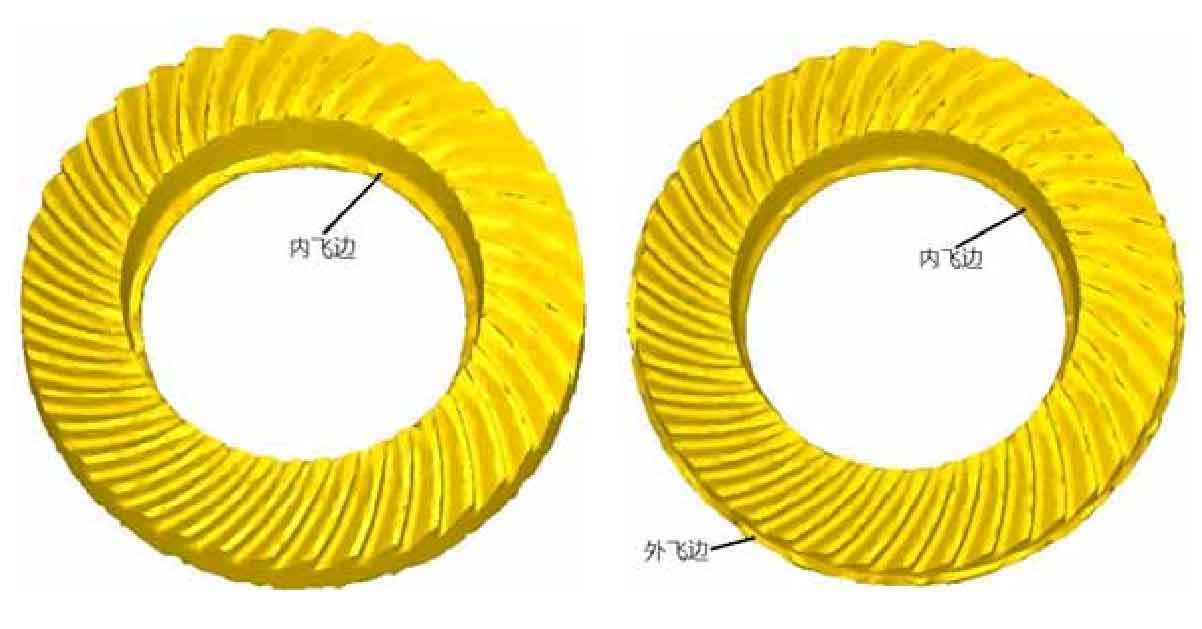Under the condition of ensuring the same volume and shape of the preform of spiral bevel gear, the internal split precision forging process scheme of spiral bevel gear and the double split precision forging process scheme of spiral bevel gear are numerically simulated by using DEFORM-3D finite element software. The numerical simulation results are viewed and analyzed through post-processing to obtain the forming force required by different spiral bevel gear forming process schemes.
The punch moves downward driven by the press. When the lower end face of the punch contacts the upper end face of the preform, it begins to squeeze the metal. Limited by the concave mold cavity, some metal materials flow radially along the shunt gap between the punch and the concave mold to form a flash, and the other part of metal materials flow axially to fill the concave mold cavity to form a spiral tooth shape. With the continuous increase of the pressing amount of the punch, the filling of the tooth cavity is finally completed. As shown in Figure 1, two process schemes are used to simulate the final formed extrusion.
The precision forging forming force of spiral bevel gear refers to the maximum forming force exerted by the hydraulic press when the shape of the preform reaches the designed part shape. The size of the forming force determines the tonnage of the hydraulic press and the service life of the die.
As shown in Figure 2, the dotted line and solid line are the stroke load curves of internal split precision forging and double split precision forging of spiral bevel gear respectively. It can be seen from the curve that in most of the forming stages of the tooth profile, the travel load curves of the two schemes tend to coincide. At the end of the tooth profile forming, in the split precision forging forming of the spiral bevel gear, the excess metal material can not flow out from the split gap in time, resulting in a sharp rise in the extrusion force. Finally, the filling of the tooth profile is completed. The maximum forming force required for the simulation is 8120kn and the unit extrusion force is 631mpa. In the double split precision forging process of spiral bevel gear, because the forging forming method of internal and external split flow of spiral bevel gear is adopted, at the end of tooth formation, some metal materials continue to fill the tooth cavity, and some metal materials flow to the split gap to form internal and external flash. When the tooth filling is full, the stroke is terminated to prevent material accumulation and alleviate the sharp rise of forming force, The maximum forming force of double split precision forming is 7100kn and the unit extrusion force is 552mpa.
Through the numerical simulation analysis, it can be seen that under the condition of ensuring the same volume of preform of spiral bevel gear, the forming force of the proposed double split precision forging method is 12.56% lower than that of the internal split precision forging method, which will help to avoid the cracking of the die, reduce the wear of die tooth profile and improve the service life of the die.


